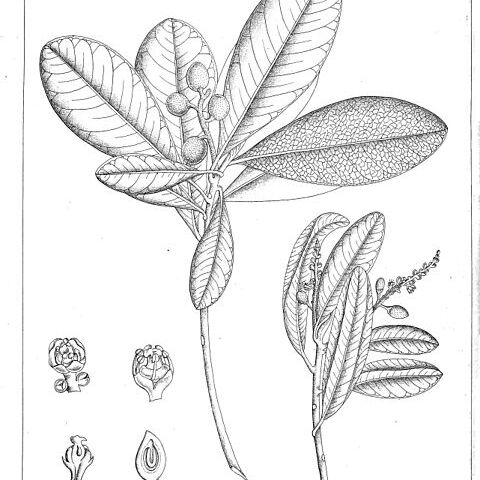Trees. Leaves petiolate or subsessile, clustered toward the branch-tips; blades simple, entire, coriaceous. Inflorescences paniculate, large, axillary but arising from the distal nodes of a branch. Flowers polygamo-dioecious, 3-5-merous; calyx per-sistent, the lobes imbricate in bud; petals erect or spreading, imbricate at anthesis; stamens 6-10, free, inserted at the base of the disc, subequal or slightly unequal, incurved, the filaments flattened, slightly narrowed toward the apex; intrastaminal disc fleshy, annular, entire or crenate-sulcate; ovary 1-2-locular, the style short, the stigma lobate-discoid, the ovule apical or basal. Drupes ovoid, erect, fleshy, 1-locular or 2-locular (one empty).

